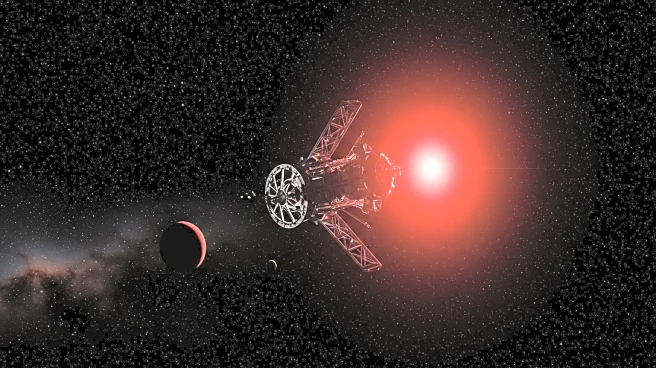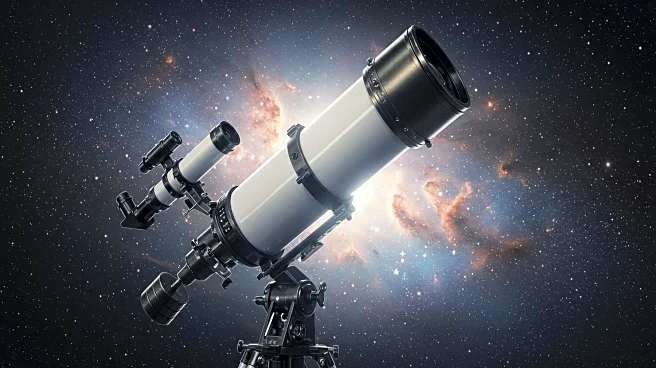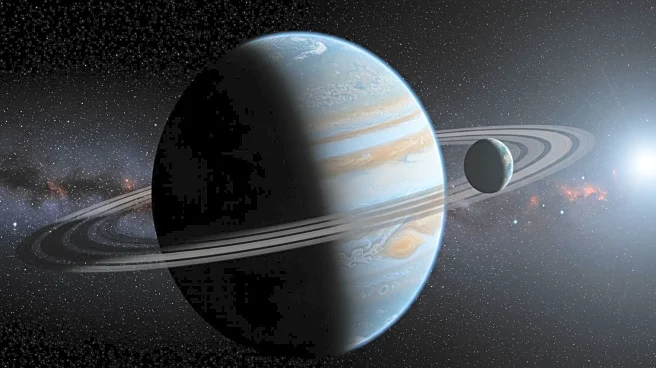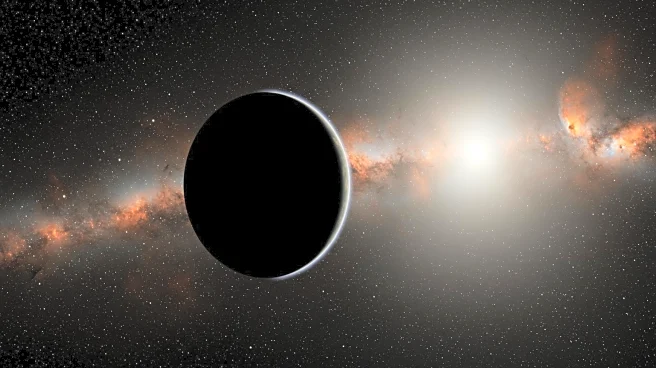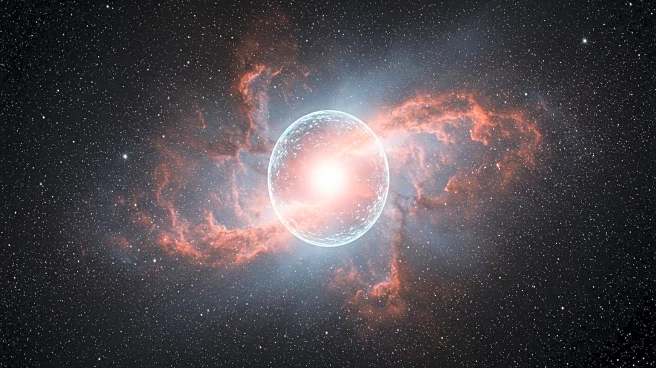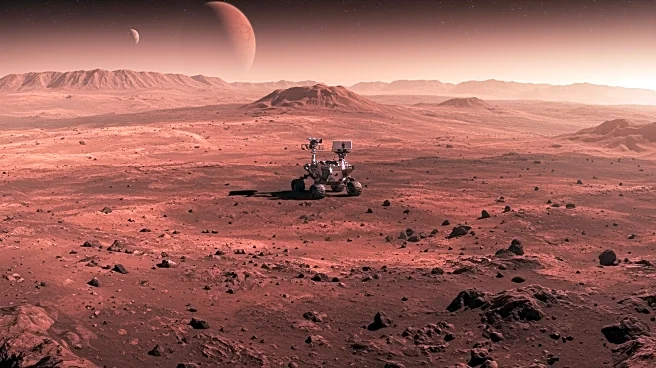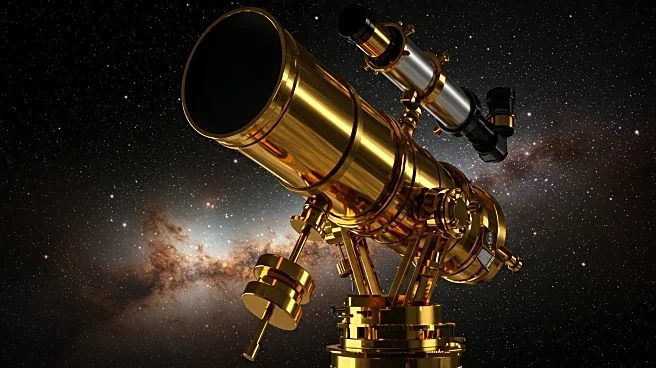What's Happening?
Recent observations by the James Webb Space Telescope (JWST) have revealed that TRAPPIST-1 d, a promising exoplanet in the TRAPPIST-1 system, does not possess an Earth-like atmosphere. The JWST used its NIRSpec/PRISM instrument to observe two transits of TRAPPIST-1 d, leading researchers to conclude that the planet lacks the atmospheric conditions necessary to retain surface water. This finding diminishes the likelihood of TRAPPIST-1 d being habitable or hosting life. The TRAPPIST-1 system, known for its seven Earth-like planets, has been a focal point for studies on potential habitability due to its location in the habitable zone of a red dwarf star.
Why It's Important?
The absence of an Earth-like atmosphere on TRAPPIST-1 d is a setback for the search for habitable exoplanets. It underscores the challenges in identifying planets that can support life, particularly around red dwarf stars known for their volatile flaring. This discovery impacts scientific understanding of planetary atmospheres and the conditions required for habitability. It also highlights the unique nature of Earth's atmosphere and the rarity of similar conditions elsewhere in the cosmos. The findings may redirect research efforts towards other planets in the TRAPPIST-1 system, which might still hold potential for habitability.
What's Next?
Researchers will continue to study the TRAPPIST-1 system, focusing on the outer planets TRAPPIST-1 e, f, g, and h, which may still possess thick atmospheres. The JWST's capabilities will be utilized to explore these planets further, aiming to understand the effects of red dwarf flaring on planetary atmospheres. Future studies will seek to define the line between planets that can retain atmospheres and those that cannot, contributing to the broader search for habitable worlds.
Beyond the Headlines
The findings from TRAPPIST-1 d contribute to the ongoing debate about the habitability of planets orbiting red dwarf stars. These stars are abundant in the Milky Way, making their planetary systems crucial targets for understanding the potential for life beyond Earth. The research also raises questions about the protective role of planetary magnetic fields against stellar flaring, which could influence the development of atmospheres. The study of TRAPPIST-1 d and similar planets may lead to new insights into planetary formation and evolution.


